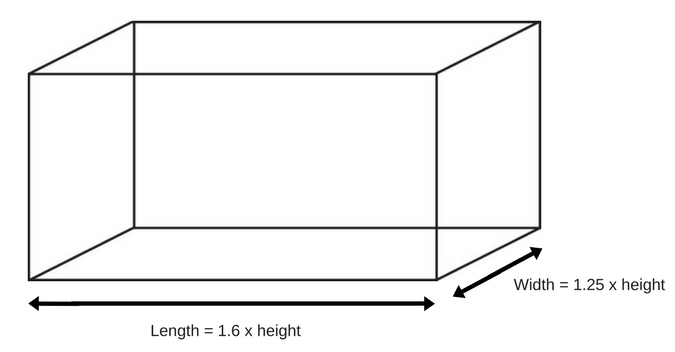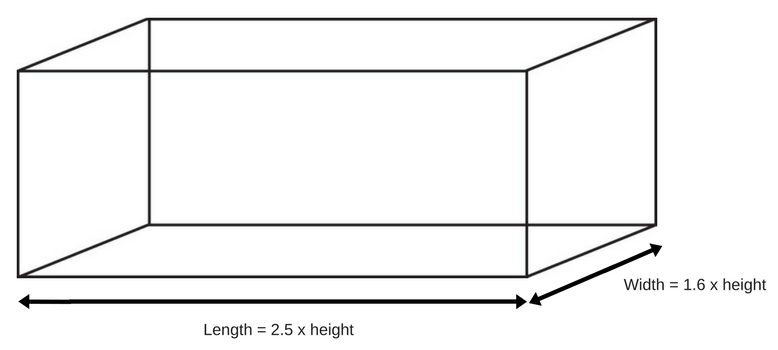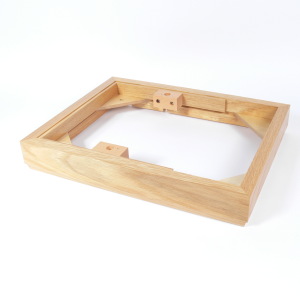
3. Room Dimensions
Every room has several low frequency resonances caused by its dimensions. There are three dominant ones defined by the height, length and width of the room and each has 2nd, 3rd, 4th, etc. harmonics. You can't stop them occurring but you can choose to use a room where they don't coincide and become a serious impediment to musical enjoyment.
If you are thinking about building a music room then, of course, you can choose to build it to the Golden Ratio. This ratio is different depending on whether it is a small room or a large room.
If I take the example of a small room, if the height is the old standard British value of 8ft (2.44m), then the width should be 10ft (3.05m) and the length 12'9" (3.89m). Fortunately, this is a very common room size so most people have little to
worry about.

Diagram 5.4: Golden Ratio for a Small room
For a large room with an 8ft (2.44m) ceiling, the width should be around 12'9" (3.89m) and the length 20' (6.1m). Again, this is a very common size.

Diagram 5.5: Golden Ratio for a Large room
You are only likely to run into problems if two (or even three) of your room dimensions or multiples of them coincide and so the resonances add up. It is possible to design resonant absorbers to control specific problem frequencies but my experience of these used in domestic environments is that they tend to cause more audible problems than they solve. I believe that they are sensible engineering solutions for use only in carefully designed and controlled professional environments like recording studios. Generally they also have the domestic disadvantages of being both ugly and expensive.
Recording studios are hopeless as domestic music rooms and vice versa. It is a mistake to use the solutions of one to solve the problems of the other. I will be recommending room tuning measures later on in this chapter, but they are specifically designed for domestic use and are things you can make yourself. If, however, after putting into practice all of my advice here and previously, you find that you have a severe room resonance problem that needs a more drastic cure, then by all means try out the resonant absorber solution. But first identify exactly what the cause is. It is a solution to be tried last not first!
Remember, it is the interaction between your system (especially your loudspeakers) and the room that is the problem rather than just the room itself. People often notice that a given system sounds different in different rooms and then jump to the conclusion that the only variable (and therefore the culprit) is the room. The truth is that some rooms will be kind to the system by not showing up the problems and others will be cruel by highlighting them. If the reality is interaction between system and room, then the only rational, productive route to take is to work on them both.






















